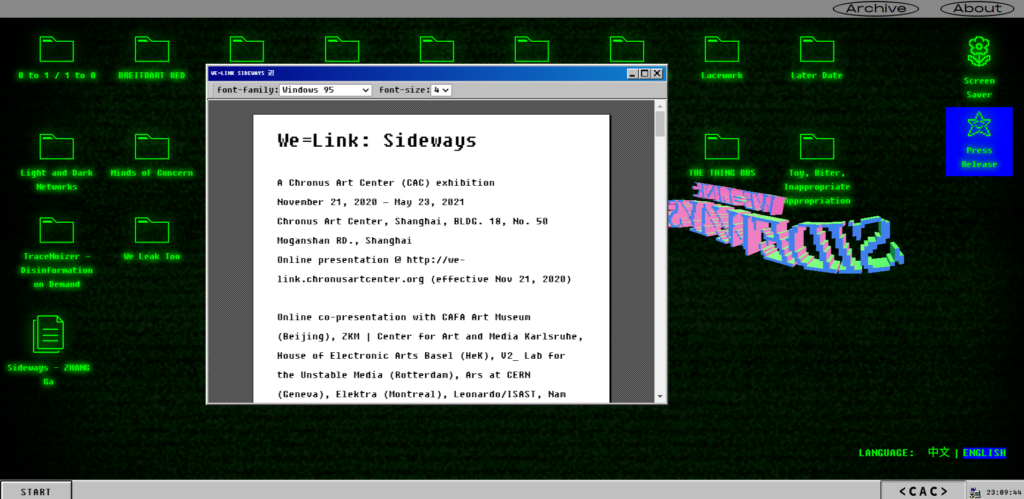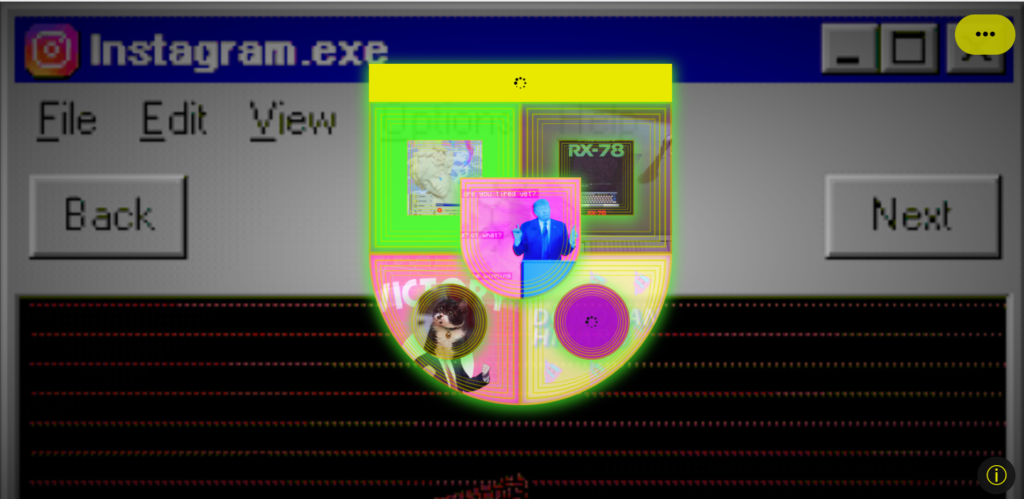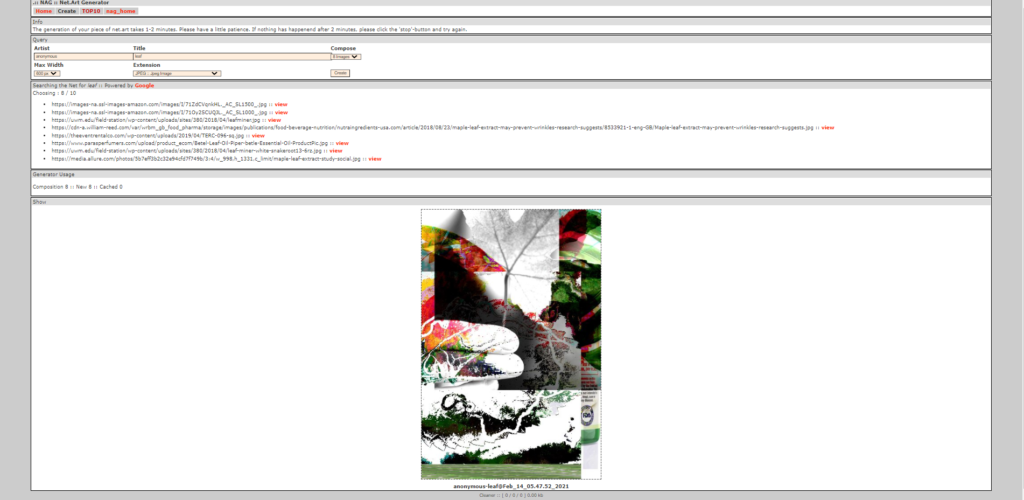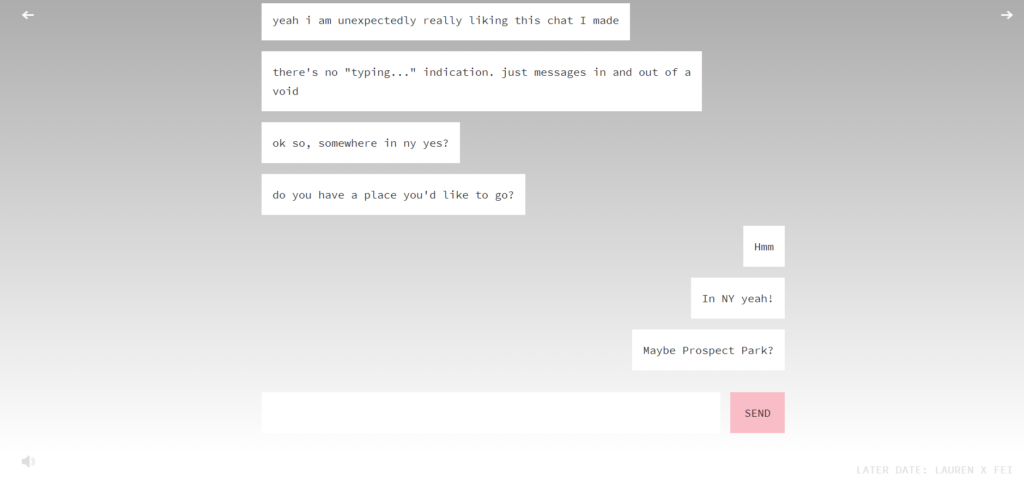The COVID-19 pandemic forced many art institutions to limit attendance to exhibitions and even close their doors to in-person events. Museums and galleries relied heavily on internet resources to remain relevant and available to the public. Interactive virtual reality tours and walkthroughs of their exhibitions became commonplace. The viewer was left alone to tour a depopulated simulation of a gallery space. Although viewers got to see a simulation of the show, these reimagined exhibitions simply did not provide the same experience as physically attending the exhibit, and probably reinforced the loneliness of our self-isolation.
In contrast, some institutions did away with the digital exhibit that reformats the art and the gallery space into the virtual realm, and instead created exhibitions that are born-digital and engage with our networked condition. The online images of the ’90s have evolved into a new form in the 2020s.
WE=LINK: SIDEWAYS, curated by Zhang Ga of Chronus Art Center, exemplifies this. It is an international virtual exhibition that not only demonstrates the need for Internet Art (Net Art) but also showcases the evolution of Net Art amidst the ongoing public health crisis. This exhibition evokes a sense of community and cohesiveness in a time of instability and anxiety through its linkage of numerous art institutions, artists, and viewers. It addresses how multimedia communications have enabled people to be simultaneously alone and together in this networked age and time of isolation.

When viewers visit the website, an interactive window featuring the curatorial text pops up on the screen. They are then able to change the font type, the font size, and maximize the window. The homepage functions as a nostalgic, interactive mock-up of a Windows ’95 desktop. By clicking the “Start†button on the bottom left of the screen, the viewer can change the language, restart the page, view the screensaver, and navigate through the collection of artworks. The viewer can choose among 22 file folders containing artworks and projects, each of which refers to some form of native Net Art such as The Thing BBS. Once the viewer clicks on the file folder, three windows appear on the screen. One window contains the artist’s statement, another contains an interactive preview of the artwork in question, and the third window includes a link to the website of the work. In other words, this virtual gallery space is an immersive artwork within itself rather than an environment simply constructed to host the artwork.

Ubermorgen’s Breitbart Red consists of three rooms: ASMR, Superdry, and Vaporwave. In each room, the viewer is presented with a plethora of conflicting images and texts that move rapidly across the screen to the point of almost being indecipherable, ultimately paralleling the bombardment of hyperbolic messages in the Information Age. In each room, the viewer is able to control the rate of the images and music with how fast they move the mouse. If the viewer stops moving it, they are soon prompted to proceed, keeping the viewer from staying in one place or focusing on one image for too long. The room ASMR conjoins these flashing images with unsettling yet somehow relaxing ASMR sound effects, invoking a simultaneous state of tension and calm. Breitbart Red exposes the expansive possibilities of digital media while examining the mass amount of contradictory information that is circulated through daily life. That virtual noise is instrumentalized by polarized media outlets (such as the far-right Breitbart) to provoke a strong sense of anxiety. Ultimately, this work stresses the state of uncertainty that the world is experiencing due to the global health crisis and how pre-pandemic conditions have exacerbated this pervasive sense of unease.

In Cornelia Sollfrank’s net.art generator, the viewer takes over the role of the artist. By clicking “Create†at the top of this page, this interactive web-based installation allows the viewer to generate their own Net Art. The title chosen for the work functions as a search term, which then pulls various images from across the internet and forms a collage. A blog is built into the website where the viewer can see the top ten Net Art creations that were developed through the generator, in addition to the ten that were most recently created. Through collective collaging, this interactive digital installation constructs a sense of community during this time of disconnect and underscores the value of Internet Art.

Lauren Lee McCarthy’s Later Date is a two-part performance in which the viewer becomes a participant, engaging with the artist through an interactive chat feature. In the first part, during the chat, both the participant and artist imagine meeting on a later date, discussing where they will go, what they will do, and what they will say. The second part happens when it is safe to meet in person again. McCarthy will send an email to the participant with a transcript of their chat, which will serve as a script for when the two meet. This interactive performance offers a break from isolation as the viewer and artist can discuss their own experiences in lockdown while also looking forward to an optimistic future post-COVID.
WE=LINK: SIDEWAYS demonstrates the need for Net Art, as it can generate a sense of community while grappling with the underlying anxieties of a pandemic. However, this virtual exhibition serves as much more than a reclamation of Net Art. As art institutions reevaluate ways to engage the public via digital formats even when their physical location reopens, they can look to WE=LINK: SIDEWAYS for inspiration. Similar to other online exhibitions of Internet Art like Well Now WTF?, co-curated by Faith Holland, Lorna Mills, and Wade Wallerstein, Cassie McQuater’s Black Room, and the New Museum’s First Look: Artists’ VR, this exhibition suggests new ways of connecting with the public virtually. WE=LINK: SIDEWAYS is indicative of a shift within the art world in which exhibitions, much like Net Art itself, are designed to be less hierarchical and exclusionary and reach a broader public by operating sideways.
To access WE=LINK: SIDEWAYS, browse to http://we-link.chronusartcenter.org/.
Top Image: Screenshot of We Link Sideways Homepage




